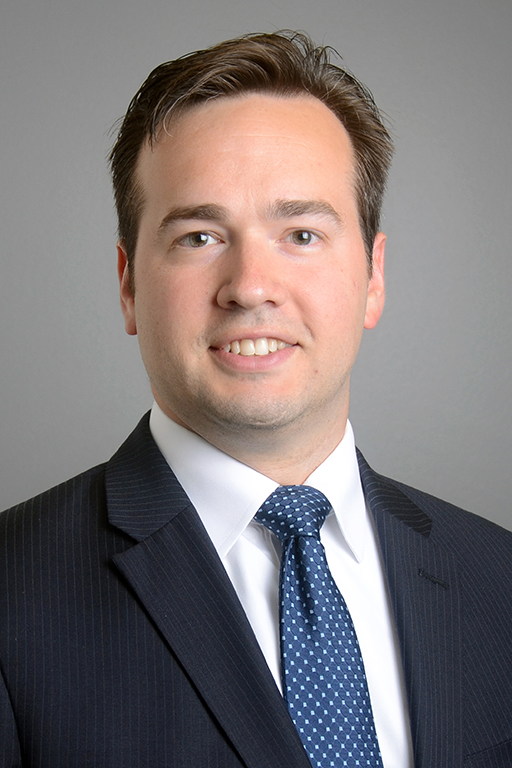
Joint Replacement
Our joints take more stress than nearly any other part of our bodies. They bend and flex, absorb impacts while walking and running, can be strained or overextended during athletic competition and do so much more day in and day out. It’s also why joint replacement and joint revision surgeries are so important to alleviate pain and restore full range of motion and mobility for those with a joint issue.
Schedule an appointment now
Our Physicians

Mark J. Anders, MD
Trauma Surgery, Joint Replacement & Reconstruction, General Orthopaedics
K. Keely Boyle, MD
Lower Extremity Joint Replacement & Reconstruction
Evgeny A. Dyskin, MD, PhD, FAAOS
Trauma Surgery, Joint Replacement & Reconstruction, General Orthopaedics
Joseph B. Kuechle, MD, PhD
Orthopaedic Oncology, Lower Extremity Joint Replacement & Reconstruction, Trauma Surgery
Brian E. McGrath, MD
Lower Extremity Joint Replacement & Reconstruction, Hip Arthroscopy & Reconstruction
Christopher E. Mutty, MD
Lower Extremity Joint Replacement & Reconstruction
Scott R. Nodzo, MD, FAAOS
Lower Extremity Joint Replacement & Reconstruction
Matthew J. Phillips, MD
Lower Extremity Joint Replacement & Reconstruction
Sridhar R. Rachala, MD
Lower Extremity Joint Replacement & Reconstruction
Andrew P. Stegemann, DO
Lower Extremity Joint Replacement & ReconstructionPatient Testimonials
“Dr. Mutty, my surgeon, and his assistant Lynn, have been just the best throughout three surgeries and follow up! I was referred to Dr. Christopher Mutty and prayed and went with him, and I am grateful for his knowledge and care!”
“I had my final visit post-surgery yesterday. I cannot say enough about Dr. Duquin and the staff at UBMD. Their expertise and commitment to my personal goals got me back on the baseball diamond after a very severe rotator cuff injury. In my opinion, the best team in the country.”
“I had a great experience with the very polite staff. Dr. Dyskin was very impressive and a straight shooter. He gave me all my options that I needed to know. I will definitely be seeing him in the future.”
Conditions and Procedures
Physicians at UBMD Orthopaedics & Sports Medicine have performed countless joint repair, joint replacement and joint revision surgeries, helping patients recover their mobility and reduce or eliminate pain. Procedures include:
- Anterior hip replacement
- Posterior hip replacement
- Hip revision surgery
- Hip resurfacing
- Full knee replacement
- Partial knee replacement
- Kneecap replacement
- Knee revision surgery
Hip & Knee Services
The fellowship-trained and experienced surgeons at UBMD Orthopaedics & Sports Medicine have decades of combined experience with hip and knee replacement and revision surgeries. Our doctors have worked and trained at such prestigious and well-known facilities as the Cleveland Clinic and the Hospital for Special Surgery in New York City, and provide comprehensive medical care – including surgical and nonsurgical options – for patients with a wide variety of conditions.

Learn about MAKO SmartRobotics™
If you haven’t experienced adequate knee or hip pain relief using medication and other conservative treatments, you may be a candidate for Mako SmartRobotics™ for Total Knee, Total Hip, or Partial Knee replacement.
Frequently Asked Joint Replacement Questions
Blank
Do I Need a Joint Replacement?
Relieving Hip and Knee Pain without Surgery
Full vs. Partial Knee Replacement: What’s the Difference?
In full knee replacement surgery, the entirety of the knee joint is replaced by implants, while partial knee surgery may be an option if only one portion of the knee joint has been damaged or affected. Determining the right surgery depends upon your individual condition and the overall health of your joint. Learn more about the differences between these two types of surgeries here.
Going Home After Surgery – FAQs
Where will I go and what will happen after my surgery? Will I return home or do I need to go to an inpatient recovery facility? These are among the most common questions asked by patients who are deciding on whether they should get a joint replacement or not. Click here to read more about what to expect after your surgery.
Wondering what can be done prior to or while your waiting for surgery? Some of these alternatives include medications, injections, special exercise programs and physical therapy. Find out about other nonsurgical options here.
How to Relieve Pain After Hip or Knee Surgery
Having a surgery such as a hip or knee replacement can be intimidating, and many people are anxious about their recovery and dealing with post-operative pain. There are many different options that can help, ranging from traditional “RICE” (Rest, Ice, Compression, Elevation) recommendations to the prescribing of pain control medications. Read more about what you can do to relieve pain in your hip or knee in the days following your surgery in this article.
Resuming Sports After Knee Replacement
Many active patients are concerned about returning to their normal life and activities after surgery, which may include playing sports. Over the past few years, there have been many advancements in knee replacement surgery that have improved the mobility and longevity of the joint, and having a replacement doesn’t mean the end of your athletics. Here is some information to help learn when or how you will be able to resume playing sports or engaging in other athletic activities after knee replacement.
PRP for the Management of Osteoarthritis of the Hip and Knee
Platelet rich plasma (PRP) is one option that may help manage osteoarthritis in the knee or hip, and injections can be done right in the office. The theory is that the use of these injections can contribute to tissue healing and pain relief in the affected joint. Currently, research is still being done on exactly what type of conditions these injections can treat and the extent of the benefits of PRP injections. Click here to learn more.
Blank
Osteoarthritis – Frequently Asked Questions
Can Stem Cell Therapy Help My Joint Pain?
How Long Will a Joint Replacement Last?
Are All Implants the Same?
For hip replacements, the ball portion will typically be made of a cobalt-chromium alloy or ceramic, while the liner will be made of plastic (polyethylene), ceramic or metal. These are then combined, leading to a ball-liner combination, such as metal on poly, ceramic on ceramic, and so on. Most common is metal or ceramic on poly, but your surgeon can discuss the different advantages of each in determining the right implant for you.
In knee replacements, there are two features that often drive the type of implant – the patient’s gender and the rotating platform. Implants today tend to be designed to accommodate gender differences in the knee joint, which helps provide more exact sizing to replicate the function of the natural knee. The rotating platform design uses a plastic bearing on a metal tray versus a fixed plastic bearing used historically, and offers more natural movement that is more similar to proper knee function.

